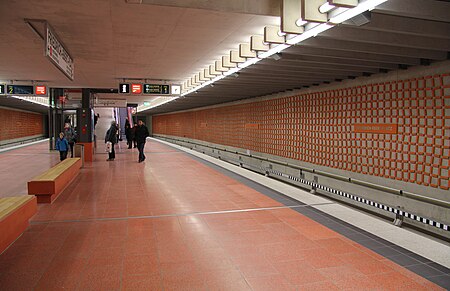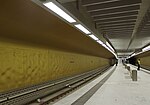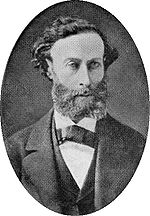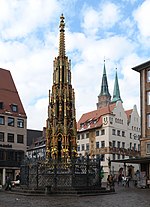Friedrich-Ebert-Platz station
German rapid transit stubsNuremberg U-Bahn stationsRailway stations in Germany opened in 2011

Friedrich-Ebert-Platz station is a Nuremberg U-Bahn station. It was the northern terminus of the U3 line from its opening on 10 December 2011 until 2017, when the extension towards Nordwestring opened. It offers interchange to Tramway line 4. Like Aufseßplatz, Hauptbahnhof and Plärrer orange tiles were used in the walls of this station to indicate a possible future interchange station. However, as of 2021 no such interchange to another subway line is planned for the foreseeable future.
Excerpt from the Wikipedia article Friedrich-Ebert-Platz station (License: CC BY-SA 3.0, Authors, Images).Friedrich-Ebert-Platz station
Bucher Straße, Nuremberg Kleinweidenmühle
Geographical coordinates (GPS) Address Nearby Places Show on map
Geographical coordinates (GPS)
| Latitude | Longitude |
|---|---|
| N 49.4626295 ° | E 11.0713496 ° |
Address
Bucher Straße
Bucher Straße
90419 Nuremberg, Kleinweidenmühle
Bavaria, Germany
Open on Google Maps










